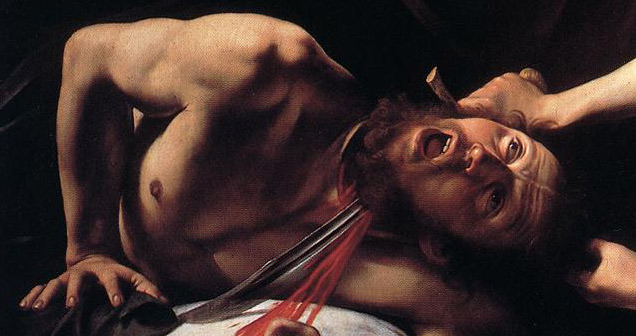Milan’s Brera Museum of Painting is currently at the center of a vexing debate surrounding the authenticity of a 400-year-old painting discovered in a French attic in 2014. Although the museum has stated it does not wish to take part in the debate, its display of the work might suggest otherwise.
As we — and countless scholars — have discussed, Michelangelo Merisi da Caravaggio (1571-1610) is perhaps one of the most contested, researched, and fascinating artists to have ever lived. Although most of his fame may be attributable to his unforgettable pictures, his controversial biography — one that surrounds his violent murder of a man and subsequent flight from Rome — deserves a healthy dose of credit as well.

The name Caravaggio is making waves across the art world this fall and forcing many of the artist’s most accomplished scholars to choose sides — par for the course. In 2014, a couple living in a home near the southwestern city of Toulouse, France, were investigating a leaky ceiling when they stumbled across a lovely 400-year-old tableau that some specialists argue is an authentic work by the Baroque master. If true, the value of the painting could easily exceed $200 million.

The painting displays a familiar scene, namely because there survives an example of the same subject that has earned universal acceptance as an authentic Caravaggio, housed today in the Galleria Nazionale d’Arte Antica. The Biblical scene — which displays the dramatic moment when a Jewish girl, Judith, beheads the Assyrian general Holofernes — was popular among artists and patrons, and many examples survive.
A comparison of the canvas in question and the authenticated work by Caravaggio reveal striking similarities — they are nearly identical, in fact. Executed with strong tenebrist light, a black background, and blood-red sheets dramatically draped above, the piece is undeniably in the style of Caravaggio. Eric Turquin believes every element of the piece aligns with the Baroque master, including “the light, the energy typical of Caravaggio, without mistakes, done with a sure hand and a pictorial style that makes it authentic.”


It is well-documented that after Caravaggio’s life and career, his revolutionary works inspired generations of followers who delighted in the opportunity to copy and learn from them. It is the opinion of this author that the recently discovered work does not appear to be executed with the same level of naturalism or skill. In particular, the contorted body of Holofernes is awkwardly placed in the composition and the lack of foreshortening in his right arm seems oddly erroneous. Further, the number of Caravaggio followers would allow the possibility for period copies to survive.
Some scholars agree, and the name of Flemish painter Louis Finson (1580-1617) has surfaced as a potential candidate. Finson was born in Bruges but spent most of his life and career in Provence. Enjoying much renown during his life, he’s credited with having become the first Flemish Caravaggisti — or follower of Caravaggio. In particular, the figure of Holofernes in the debated picture displays a few anatomical consistencies with Finson, including the rather pale tone of the skin and slightly elongated form. Further, the painting having been found in France might also add some degree of support, albeit more weakly.
The painting is currently being shown juxtaposed with authentic works by Caravaggio through February 5 at Milan’s Brera Museum of Painting. The display hedges on the identification of the picture, adding an asterisk and noting its attribution to Caravaggio. Whatever side of the fence you fall, we cannot forget the excitement and celebration of this discovery, irrespective of its creator. Even so, some in the art word who believe in the painting’s authenticity might be exhibiting some wishful thinking.
To learn more, visit the Brera Museum of Painting.
This article was featured in Fine Art Today, a weekly e-newsletter from Fine Art Connoisseur magazine. To start receiving Fine Art Today for free, click here.








